I am building a small amplifier which is working just fine. While experimenting I interchanged the TL072s with NE5532s and the amplifier stopped working, so I set up a simple non-inverting amplifier to check why.
Here is the schematic + circuit:

simulate this circuit – Schematic created using CircuitLab
Problem: I noticed that the non-inverting input is taking in about 200uA current which is obviously not the max. 800nA input bias current from the data sheet. So with the 27k resistor it's at about -6 to -7 volts, doesn't matter if I connect a signal source or not and the output swings to the negative rail.
My Guess: I know that the NE5532 uses a pair of input protection diodes which I guess are the cause of this current since the circuit works using a TL072. If that is the case: How do I end up forward biasing them? I really want to understand what is happening here. If that is not the case: What am I doing wrong?
Things I tried out / found out:
- The circuit works just fine with a TL072
- Removing the 1uF capacitor
- Using a different NE5532
- Lowering the supply voltage of +/-15V symmetrically, I noticed that the voltage drop over the 27k resistor is more or less about quarter of the total supply voltage. (7V for +/-15V)
- With the capacitor the output sits at about -14V which makes sense.
I'd really appreciate any help - thanks in advance.
